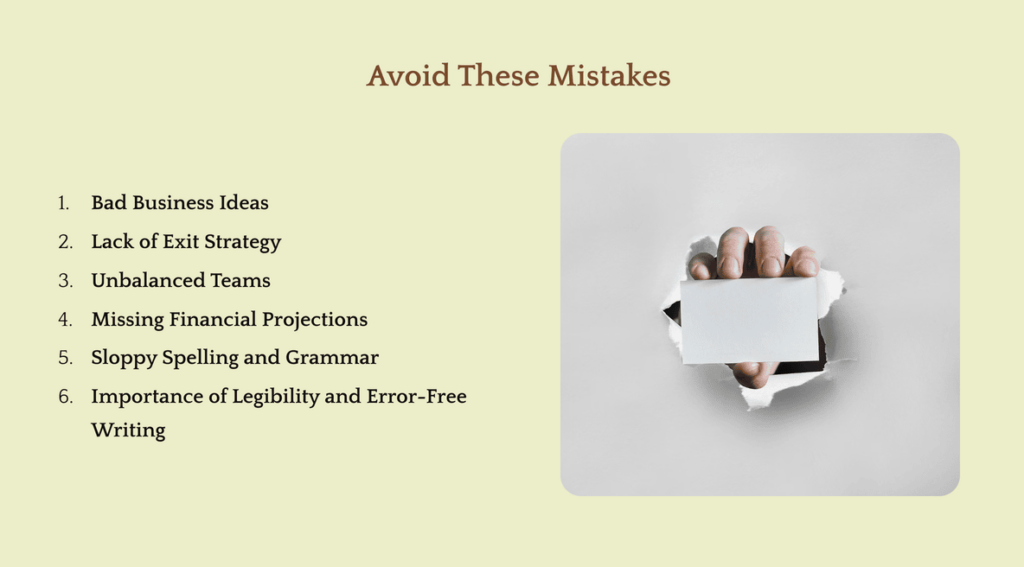
Quick Summary
Table of Contents
Starting an online business can be exciting, but without a proper plan, it can also be overwhelming. An online business plan is a detailed document that outlines your goals, strategies, and the steps you need to take to make your online business successful. Whether you want to start a small e-commerce store, offer digital services, or launch an app, it is essential to keep you focused and organized. Studies show that a strong business plan can increase the likelihood of business growth by up to 30%, highlighting its importance for overall development.
In today’s rapidly evolving digital economy, having a solid online business plan isn’t just an advantage – it’s a necessity. Whether you’re a college student dreaming of launching a startup, a professional looking to pivot your career, or an aspiring entrepreneur wanting to make your mark, this guide will walk you through everything you need to know about creating an effective online business plan.
Read More :- 8 Best Online Teaching Apps For Effective Online Classes

An online business plan is a written document that explains the structure, goals, and strategies of your business. It is similar to a traditional business plan but is specifically tailored for businesses that operate online.
This plan helps you:
Read More About :- How To Start A Dropshipping Business In 5 Easy Steps
Click Here For :- Free Online Business Plan Generator

To create a successful online business plan, you need to include the following key components:
| Section | Description |
|---|---|
| Executive Summary | The first and critical component of an online business plan is writing an executive summary. It summarizes your overall business plan as a whole and highlights the aspects that your business plan covers. |
| Business Description | The next component comes the business description. It provides a comprehensive account of your business and its products and services, audience, strategies, etc. It also includes your business experiences if any, such as collaborations, etc. |
| Market Analysis | This component aims to conduct a market analysis by researching and identifying the nature and details of your target customer base. This includes their geographical location, needs, demand, and demographics. |
| Marketing Strategy | This section of your online business plan includes information about your plans for marketing and selling products. It includes your marketing strategies, pricing policies, selling proposals, and market competition. |
| Financial Plan | This component gives detailed Information on your budget, costs, revenue projections, and funding needs. |
| Operational Plan | The final component of your online business plan describes the day-to-day operations of your business. |
Read More :- Top 15 Online Business from Home Ideas to Amplify Your Earnings
Creating an effective online business plan involves several critical steps. Below is a detailed breakdown, complete with examples and actionable tips to help you write a strong plan.
The executive summary is the first section of your business plan, but it should be written last. This is because it summarizes the entire plan in one or two pages.
If you’re starting an online clothing store:
“Our online clothing store, StyleSphere, focuses on eco-friendly, affordable fashion for young adults. We aim to reduce environmental impact by offering sustainable clothing options and plan to grow our revenue by 25% within the first year through targeted social media marketing.”
This section provides more details about your online business.
If you’re building an online fitness coaching platform:
“FitFlex is an online platform offering customized workout plans, virtual personal training, and wellness resources for busy professionals. Our focus on flexibility and affordability sets us apart from traditional gym memberships.”
To make your online business plan strong, you must research your market thoroughly.
If you’re launching a kids’ educational app:
“Our target audience is parents of children aged 5-10 years, primarily in Tier 1 and Tier 2 cities in India. The online education market in India is expected to grow by 17% annually, providing an ideal opportunity for our gamified learning platform.”
This section explains how your business is different from others in the market.
If you’re entering the online grocery delivery market:
“Competitors such as BigBasket and Grofers focus on metropolitan cities. Our platform, FreshFarm Delivery, will cater specifically to semi-urban and rural areas, offering fresher produce and affordable prices.”
Your marketing strategy outlines how you’ll attract and retain customers.
For a skincare product website:
“Our marketing strategy will focus on Instagram ads and collaborations with beauty influencers to reach women aged 18-35. Additionally, we’ll publish weekly blog posts on skincare tips to boost organic traffic through SEO.”
A strong online business plan must include financial projections.
If you’re starting a subscription box service:
“The initial setup cost is ₹5,00,000, which includes website design and sourcing products. Monthly expenses are estimated at ₹1,00,000, while projected revenue for the first year is ₹12,00,000 based on 500 subscribers paying ₹2,000 per month.”
This section describes how your business will function on a daily basis.
For a digital marketing agency:
“Our team will operate remotely, using tools like Trello for project management and Google Meet for client calls. Content creation and social media management will be handled in-house, while SEO audits will be outsourced.”
By following these steps, you can create an online business plan that not only outlines your vision but also attracts investors and ensures a solid foundation for success.


Using ready-made examples and free business plan template word can simplify the process of drafting your online business plan. Here’s how they can help and a few examples tailored for various online businesses:
Example:
Business Name: TrendyKart
Business Idea: An e-commerce platform selling affordable fashion for millennials.
Template Outline:
1. Executive Summary:
• Goal: To capture the millennial market in Tier 1 and Tier 2 cities with affordable, trendy clothing.
• Vision: To become India’s top affordable fashion destination.
2. Market Analysis:
• Target Audience: Young adults aged 18-30.
• Competitors: Myntra, Ajio.
• Opportunity: Increasing demand for affordable fast fashion.
3. Marketing Strategy:
• Channels: Instagram ads, influencer partnerships, and SEO blogs on fashion tips.
• Budget: ₹50,000 per month for digital marketing.
4. Financial Plan:
• Initial Cost: ₹2,00,000 (inventory and website development).
• Expected Revenue: ₹15,00,000 in the first year.
Tip: Use free tools like Canva to design professional pitch decks for investors.
Example:
Business Name: LearnEasy
Business Idea: A platform offering live and recorded classes for competitive exams.
Template Outline:
1. Executive Summary:
• Mission: To make quality education accessible to all students preparing for government exams.
2. Business Description:
• USP: Affordable pricing with expert-led live sessions.
• Revenue Model: Subscription-based.
3. Market Analysis:
• Competitors: Unacademy, Byju’s.
• Audience: Students aged 16-25 preparing for SSC, UPSC, and other exams.
4. Marketing Strategy:
• Focus on YouTube for free demos to attract leads.
• Collaborate with educational bloggers to boost visibility.
5. Operational Plan:
• Tools: Zoom for live classes, Thinkific for course hosting.
• Team: 5 educators and 2 customer support staff.
Tip: Offer free trials to gain user trust and feedback.
Example:
Business Name: DigiBoost
Business Idea: Offering digital marketing services for small Indian businesses.
Template Outline:
1. Executive Summary:
• Goal: To empower small businesses with affordable marketing solutions.
2. Market Analysis:
• Audience: Local businesses in India looking for online growth.
• Competitors: Freelance platforms like Fiverr and local agencies.
3. Services Offered:
• Social Media Management, Content Marketing, and SEO.
4. Marketing Strategy:
• LinkedIn outreach for B2B clients.
• Budget-friendly ad campaigns on Facebook.
5. Financial Plan:
• Initial Setup: ₹1,00,000 (website, software tools).
• Monthly Expenses: ₹25,000.
• Expected Revenue: ₹3,00,000 in the first 6 months.
Tip: Highlight your success stories or case studies on your website.
Here are some free resources where you can download templates for your online business plan:

Other publications on online business plans would never tell you what we’re about to tell you: Your business plan may collapse.
You don’t want to waste time and effort, therefore avoid these typical mistakes:
We covered the essentials of an online business plan, including its significance and key tips for creating an effective plan for your e-business. In short:
An online business plan is the backbone of your business success. It helps you stay organized, attract investors, and achieve your goals. By following this guide, you can create a comprehensive plan that sets your business on the right track.
Start crafting your online business plan today and turn your dream into reality!
To create an online business plan, you should:
• Conduct market research to identify your niche.
• Define your business model.
• Identify your target audience.
• Decide on your products or services.
• Develop a strong brand identity.
• Create a marketing strategy.
• Plan your business operations.
• Develop a financial plan.
• Ensure legal compliance.
To start an online business:
• Identify a profitable niche.
• Conduct market research.
• Develop a business plan.
• Register your business and secure necessary licenses.
• Build an e-commerce website.
• Develop a marketing strategy.
• Launch your business and start promoting it.
Key tools include:
• Market research tools: Google Trends, Statista.
• Business plan software: LivePlan, Bizplan.
• Financial planning tools: QuickBooks, Xero.
• Marketing tools: Google Analytics, HubSpot.
• Legal tools: DocuSign, LegalZoom.
Laws to consider in India include:
• Business registration.
• Tax registration (GST).
• Compliance with IT Act 2000, Consumer Protection Act, etc.
• Data privacy regulations.
• Payment gateway compliance with RBI regulations.
Consider these key elements:
1. Understand your target market.
2. Define your unique value proposition.
3. Ensure scalability for future growth.
Types include:
1. Startup plan.
2. Internal plan.
3. Strategic plan.
4. Operational plan.

Authored by, Amay Mathur | Senior Editor




Amay Mathur is a business news reporter at Chegg.com. He previously worked for PCMag, Business Insider, The Messenger, and ZDNET as a reporter and copyeditor. His areas of coverage encompass tech, business, strategy, finance, and even space. He is a Columbia University graduate.
Editor's Recommendations
Chegg India does not ask for money to offer any opportunity with the company. We request you to be vigilant before sharing your personal and financial information with any third party. Beware of fraudulent activities claiming affiliation with our company and promising monetary rewards or benefits. Chegg India shall not be responsible for any losses resulting from such activities.
Chegg India does not ask for money to offer any opportunity with the company. We request you to be vigilant before sharing your personal and financial information with any third party. Beware of fraudulent activities claiming affiliation with our company and promising monetary rewards or benefits. Chegg India shall not be responsible for any losses resulting from such activities.